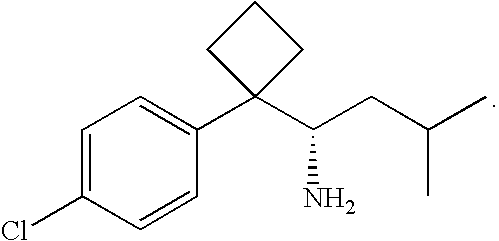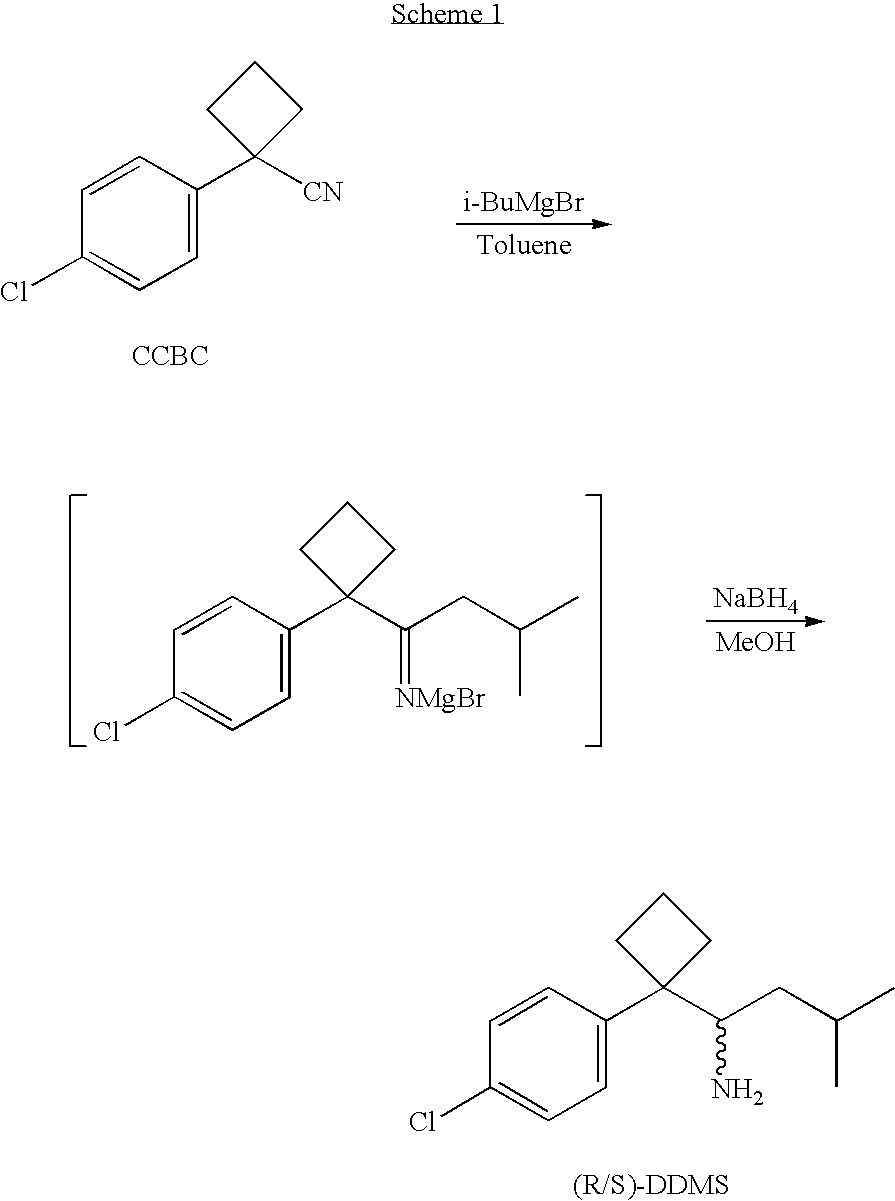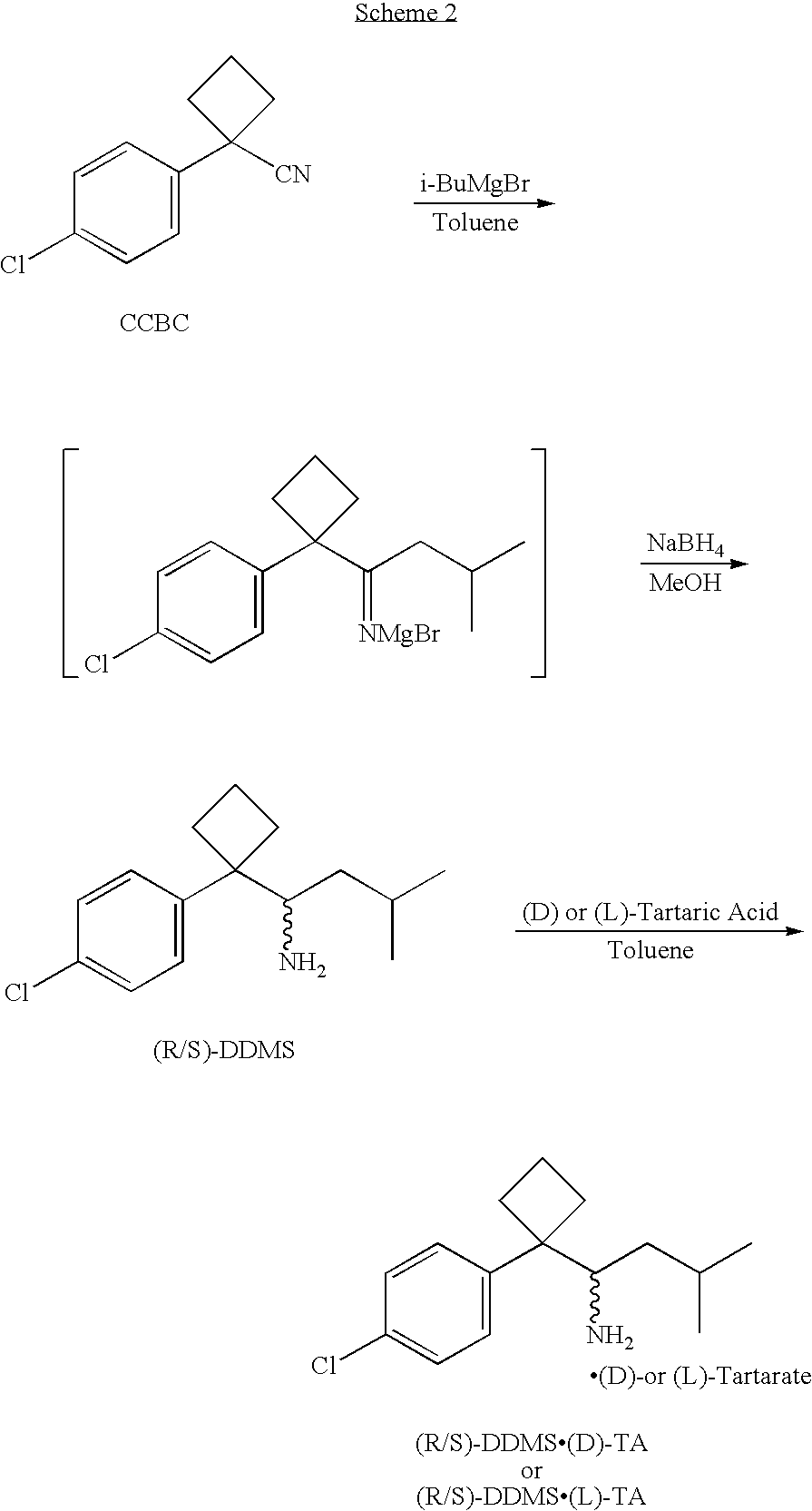Methods of treating, preventing and managing a sleep disorder using (S)-didesmethylsibutramine
a technology of dimethylsibutramine and sleep disorder, applied in the direction of nervous disorder, biocide, drug composition, etc., can solve the problems of affecting sleep quality, affecting the quality of life of people,
- Summary
- Abstract
- Description
- Claims
- Application Information
AI Technical Summary
Benefits of technology
Problems solved by technology
Method used
Image
Examples
Embodiment Construction
[0029] This invention is based, in part, on a realization that enantiomerically pure (S)-didesmethylsibutramine, or a pharmaceutically acceptable salt, hydrate, solvate, clathrate or prodrug thereof, can be used to treat, prevent or manage various diseases or disorders. (S)-didesmethylsibutramine, which is chemically named 1-[1-(4-chlorophenyl)cyclobutyl]-3-methyl-butylamine, has the structure shown below:
[0030] As used herein, the term “pharmaceutically acceptable salt” refers to salts prepared from pharmaceutically acceptable non-toxic acids, including inorganic acids and organic acids. Suitable non-toxic acids include inorganic and organic acids such as, but not limited to, acetic, alginic, anthranilic, benzenesulfonic, benzoic, camphorsulfonic, citric, ethenesulfonic, formic, fumaric, furoic, gluconic, glutamic, glucorenic, galacturonic, glycidic, hydrobromic, hydrochloric, isethionic, lactic, maleic, malic, mandelic, methanesulfonic, mucic, nitric, pamoic, pantothenic, phenyl...
PUM
| Property | Measurement | Unit |
|---|---|---|
| temperature | aaaaa | aaaaa |
| volume | aaaaa | aaaaa |
| volume | aaaaa | aaaaa |
Abstract
Description
Claims
Application Information
 Login to View More
Login to View More - R&D
- Intellectual Property
- Life Sciences
- Materials
- Tech Scout
- Unparalleled Data Quality
- Higher Quality Content
- 60% Fewer Hallucinations
Browse by: Latest US Patents, China's latest patents, Technical Efficacy Thesaurus, Application Domain, Technology Topic, Popular Technical Reports.
© 2025 PatSnap. All rights reserved.Legal|Privacy policy|Modern Slavery Act Transparency Statement|Sitemap|About US| Contact US: help@patsnap.com



